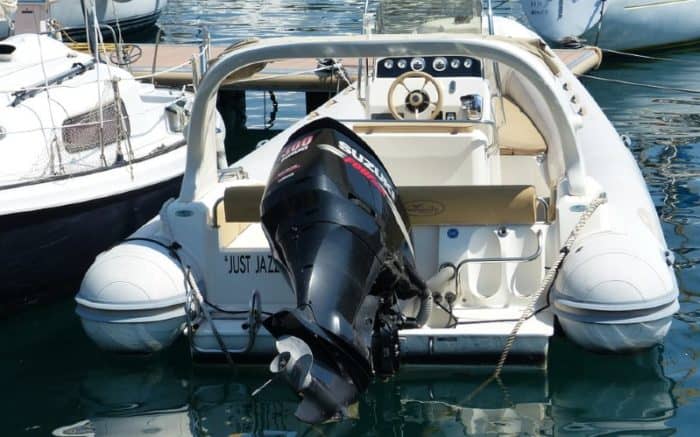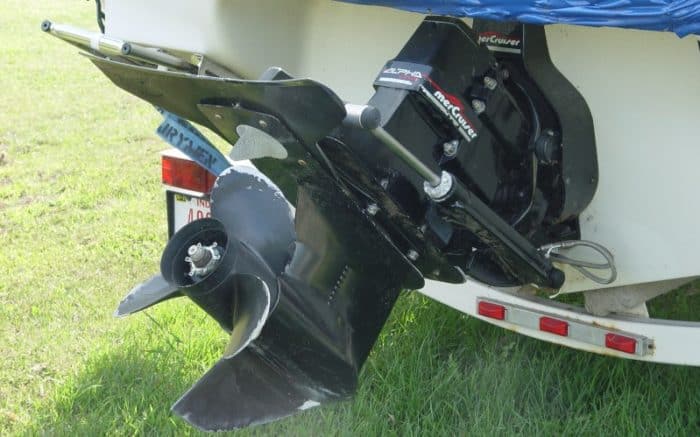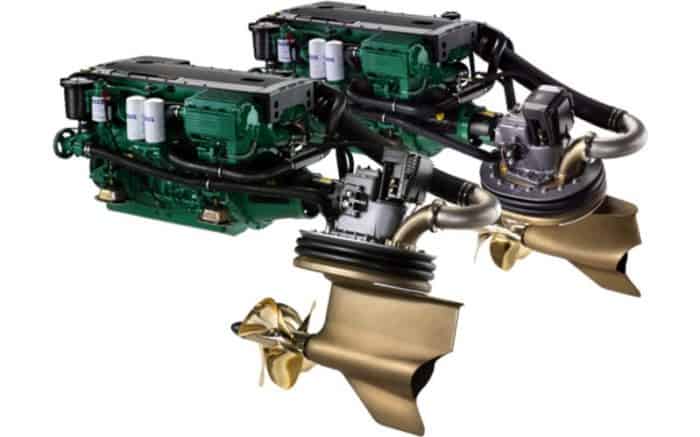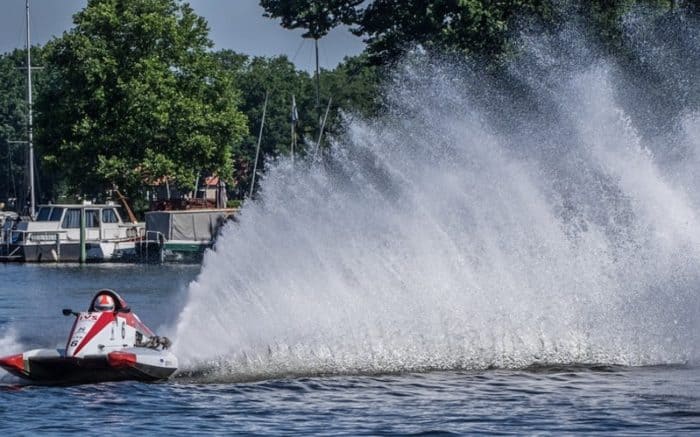Understanding Different Kinds of Boat Propulsion
Anyone can look at an aluminum fishing boat and a yacht and know that they are not the same. Not only is the purpose different, and the look, but how it moves. Boat propulsion depends on a number of factors. Some boats obviously need more powerful motors than others. Some are faster and more efficient than others. Let’s take a look at the basic kinds of boat propulsion available.
Outboard Engines
This is one of the most common propulsion systems. It’s popular with smaller boats. An outboard engine is a self-contained external motor unit. It contains the entire engine, a gearbox, and the propeller. It’s everything you need to make your boat move. An outboard motor is designed to swivel to provide reliable steering. It can be removed from a boat entirely if need be. The engine rotates a shaft that spins the propeller. The propeller thrust moves the boat forward.
Typically, you’ll see this mounted right on the transom of a boat. Back in the day, they were noisy as all get out. And they weren’t always fuel efficient. But modern outboards are a whole new breed. They can run very quietly and provide great power. They are also economical when it comes to fuel use.
In terms of function, outboard motors can come in a wide array of sizes. A small outboard can be more than enough to power a fishing boat. On the other hand, you can also get a 600 horsepower V12 outboard. Something that size could have you racing across the water.
Traditionally, outboard motors run on gasoline . You can also find diesel engines and ones that run on mixes of gas and oil. However, just as with cars, there are electric motors also available. Some of these offer up to 80 horsepower. As battery technology improves, so will these engines.
Inboard Engines
Like the name suggests, this type of engine is mounted inside the boat itself. They are within the hull and a driveshaft connects to the propellers under the boat at the rear. There will also be a rudder in place behind the propeller to allow for steering. You’re likely to see these in large vessels because they have the space to accommodate it. Typically, inboard boats are over 26 feet long.
Your boat can either have a V-drive inboard or a straight drive shaft. The straight shaft will take up more room but is pretty reliable. In this setup, you have a rear facing engine. The shaft extends out of the engine through the bottom of the boat. A V drive faces forward. It allows you to have more interior cabin space. The transmission has to redirect backwards to a shorter shaft out of the boat. Because of the extra step, a V-drive is usually not as powerful as a straight shaft. It also weighs down the back of the boat. That can cause the stern to rise up a little bit. Functionally, these are both very similar to an outboard. The main difference is just where the engine is located. Inboard motors run on gasoline or diesel fuel as well.
The benefit of an inboard engine is that it’s not in your way. This makes them ideal for watersports. Wake surfers and water skiers are safer when you have this kind of engine. It also means you can fish or swim off the back of the boat more easily. The straight shaft configuration also offers an efficient transfer of power. But maintenance for this kind of engine is harder. And fixing them can be costlier.
Sterndrive Boat Engines
Put inboard and outboard together and you get stern drive engines. For that reason, a stern drive engine is also called I/O or inboard/outboard. A sterndrive engine has the drive unit mounted inboard. But it also has an outdrive unit mounted below the transom. In a way, it’s like having half an outboard mounted on the back of the boat. You can steer this with a steering wheel
The engine portion of a sterndrive is similar to automobile engines. That means you’re getting some reliable power. And with less mechanical parts outside of the boat on the back, these are popular choices. They can be more powerful than an outboard or inboard as well. Since they run essentially the same way, more serious boaters prefer them. You’ll find them on larger boats far more often than an outboard.
Like the other boat engine types, these can be a hassle to repair. There are more working parts here than on an outboard. That leaves them more susceptible to damage. Overall, though, they perform better than an outboard.
Newer Kinds of Marine Propulsion Systems
In an effort to maximize fuel economy, steering control, technology is always growing. Newer types of boat propulsion system techniques are out there. These improve on the propeller shaft tech of old for commercial and recreational boats alike.
Pod Drives
Pod drives are far less popular than the other engine types we have discussed. In this set up, the gearbox and drive are mounted right under the boat in the water. You can have one pod or several mounted below the boat. They transfer engine power to thrust and forgo the shaft set up of other engines.
A pod drive is not very cost effective. The technology is still relatively new, though. You’ll see it most often on newer yachts. The upsides are pretty impressive. You have better speed, handling, and fuel efficiency. Drag is greatly reduced in this design. Power output is increased.
You can mount several pods and control them with a joystick. Word is that pods make docking an extremely easy process. Pods also allow for position fixing. Computer control means you can press a button and the pods keep your boat in one GPS position.
The downside to a pod drive is the price and maintenance. Few people have experience with pod drives. That means if yours breaks, fixing it will take some time and premium prices. You need to keep the lubricated regularly too, and you can’t just use WD-40 or leftover motor oil.
Surface Drives
These are built for speed. If you’ve ever seen a surface drive in action, it’s impressive. These are often confused for jet drives by people at first glance. They are similar, but not the same. The big difference is the fact that this still uses a propeller.
A surface drive is similar to an inboard engine in terms of where the motor is located. The big difference is in how the shaft comes out and the propellers are used. In an inboard setup, the propellers are under the water at the back, under the boat. Not so with a surface drive. Like the name suggests, the props stay up at the surface. The top half of the propellers will actually be above the water. This design allows you to wring a lot more power from your engine.
Cavitation is the formation of bubbles around the prop which reduce efficiency. Surface drives cut down on this. They increase fuel efficiency and performance as well. You’ll probably be able to pick a surface drive vessel out of a crowd when it’s in motion. It’ll be the one shooting up that huge arc of water behind it. They call those rooster tails.
The downside to a surface drive is that they can be costly. This is especially true if they break.
Jet Drive Boats
A jet drive doesn’t use a propeller at all. That’s a defining characteristic that allows a jet drive boat to stand apart. Jet boats actually do use something called an impeller to produce thrust. However, it’s located in the unit itself. That jet propulsion unit is considered a big safety factor for a lot of people. It’s hard to worry about a propeller accident if you can’t reach the propeller.
The impeller pulls water in thanks to a pump. It is then forced back out at high pressure through the nozzle at the rear of the boat. You can adjust the nozzle position to steer the boat. There’s a cover that goes over the nozzle to allow a jet drive to reverse. This is because the impeller itself does not go in reverse.
Jet boats offer a more shallow draft than other kinds of engines. That’s ideal for a number of boats, including yachts. Smaller vessels like personal watercraft will also use this technology. That’s because it’s safer for operators.
Jet drives tend to offer much smoother and calmer rides than other engine types. The downside is that it’s harder to maneuver at low speeds. At higher speed you’re good to go. And, like many of these engine types, repairs can be a killer. The cost of fixing a jet drive will be much more than an outboard. Plus, these are less fuel efficient.
The Bottom Line
The right kind of propulsion for the right kind of boat is never cut and dry. People are trying to innovate new methods all the time. And old methods, like the outboard, are always being improved.
In practical terms, you need to account for weight and horsepower. A little jon boat probably doesn’t need a jet drive, right? But a luxury yacht won’t get far with a 10 horsepower outboard.
You never want to overpower a boat. If the engine is too powerful, it becomes unsafe. Not just for you, but for marine life and other boaters. It may seem cool to have a super powerful engine, but you must always be in control.
On the other hand, an underpowered boat is a letdown and a liability. If you can’t move as fast as you need to, that could be a danger. Likewise, you could wear out the engine by overtaxing it. That can lead to high fuel costs and repair costs.
When it comes to choosing your propulsion, go for whatever seems most efficient. If you love speed and that big rooster tail, try a stern drive. If you like cutting edge tech, look into pod drives. If you just want a reliable old standby, an outboard is a great choice. Just make sure you know how to operate it and it’s suited for the boat you have.
As always, stay safe and have fun.
Categories: nauticalknowhow

















